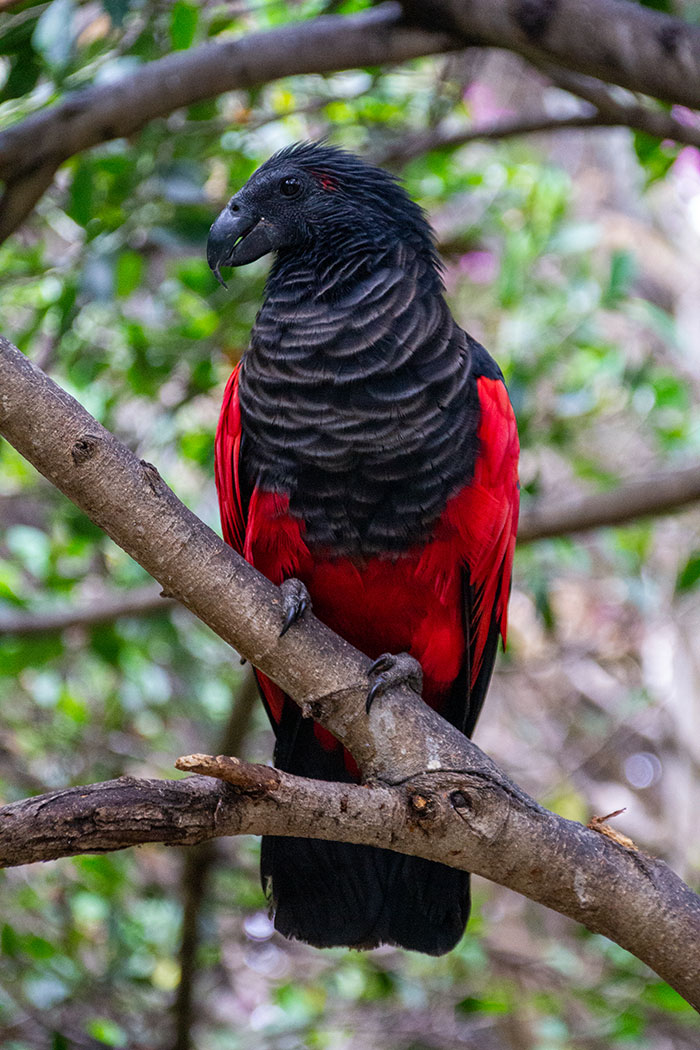When we envision parrots, vibrant hues of green, red, and blue often come to mind. Yet, the realm of parrot species is far more diverse than we could fathom. With 393 distinct variations, these intelligent and captivating creatures continually astound us with their allure. Among these remarkable avian wonders, one stands out—the Pesquet’s parrot, commonly known as the Dracula parrot.
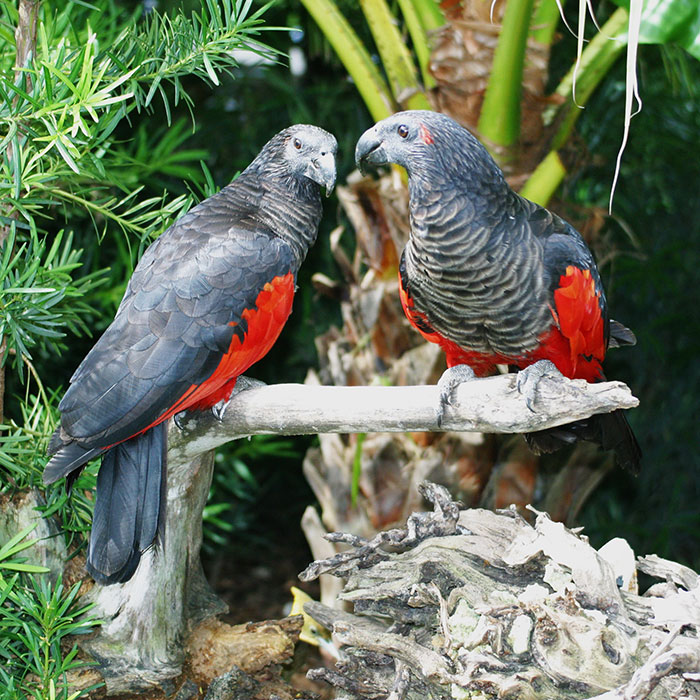
Renowned for their dark and gothic appearance, Dracula parrots bear a distinct presence. Adorned with black and grey chests, obsidian beaks, and striking strokes of bright red plumage, they easily capture attention.

These short-tailed parrots reach a length of approximately 50 cm (20 in) and weigh around 680–800 g (24–28 oz). In terms of physical appearance, males and females of this species exhibit remarkable similarities, except for the subtle distinction of red patches behind the males’ ears.
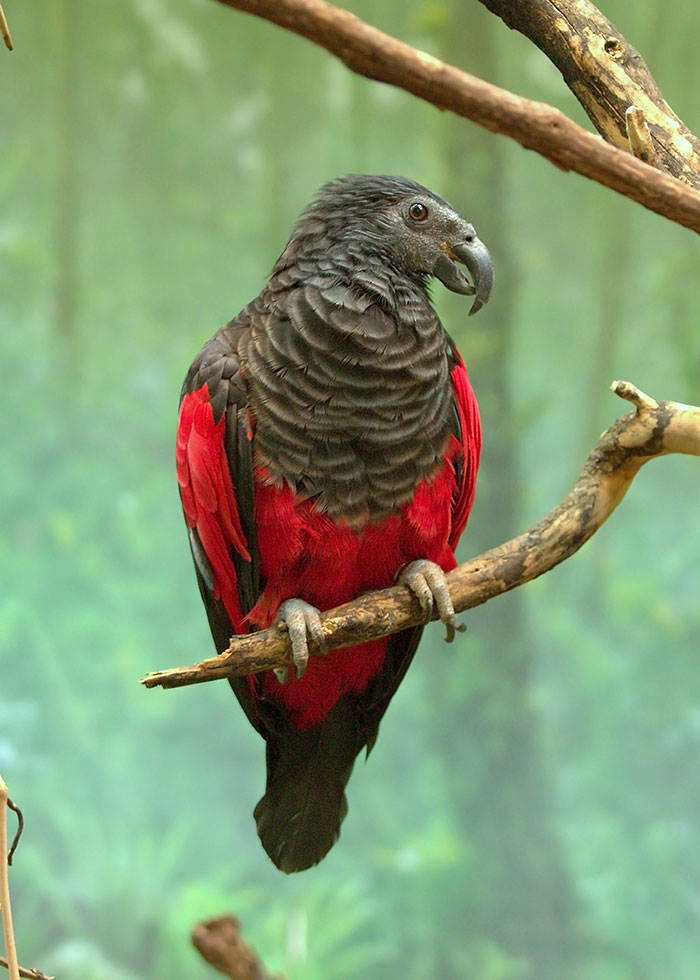
Unlike their arboreal counterparts, Dracula parrots navigate their surroundings through an unconventional means—jumping. Rather than climbing branch to branch, these agile birds exhibit their own distinctive locomotion.
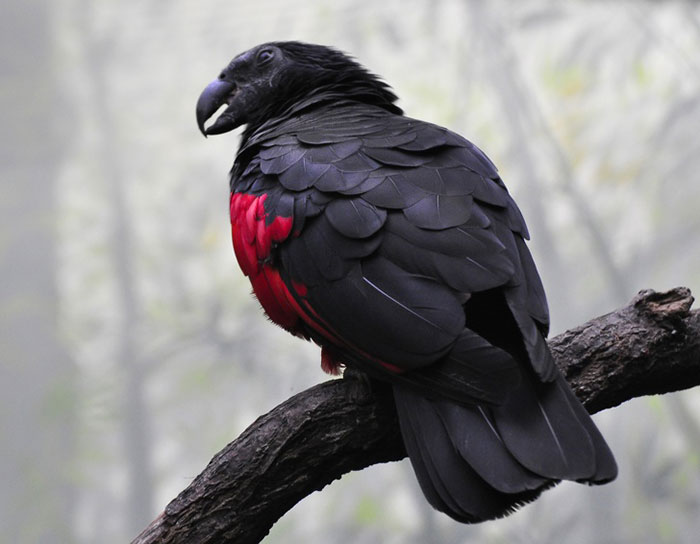
Endemic to the mountains of New Guinea, these fascinating parrots boast the distinction of being one of three parrot species with featherless faces. Their striking countenance and unique adaptations set them apart in the avian world.
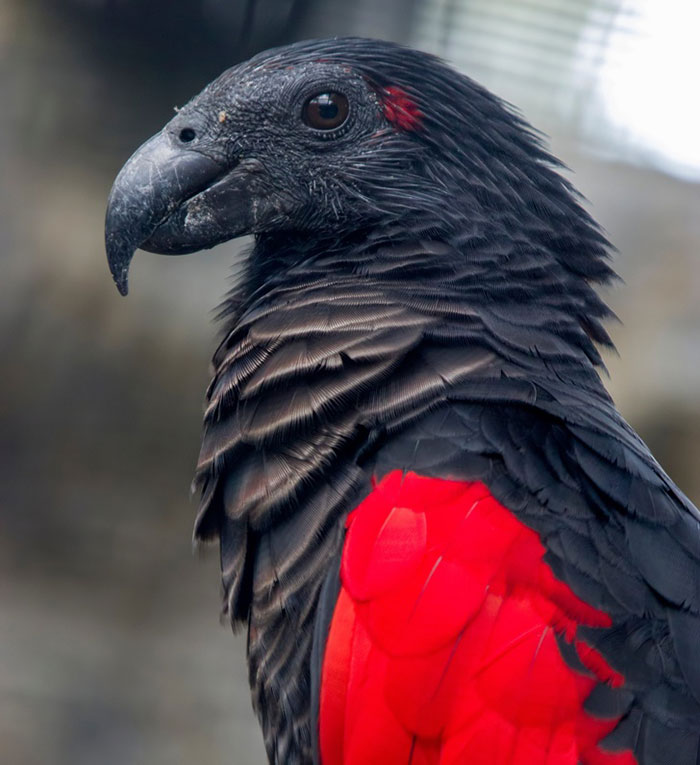
Regrettably, the Dracula parrots face numerous challenges in their natural habitat. Locally, they have fallen victim to poaching, further exacerbating the threat posed by habitat loss. Consequently, their population has dwindled to perilously low numbers, sounding an alarm for conservation efforts.
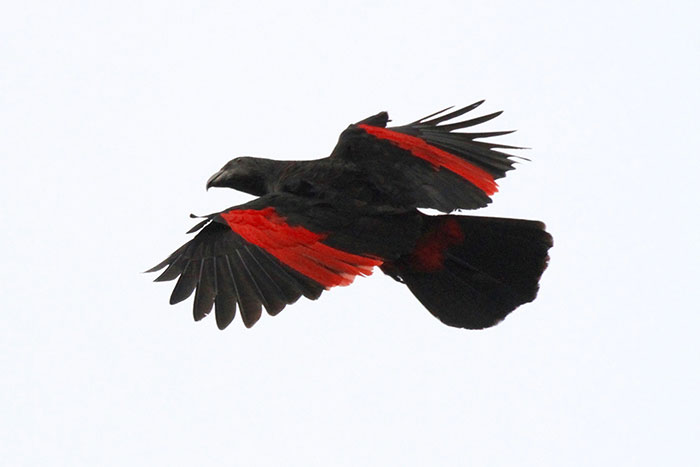
These resplendent creatures have become sought-after targets for their feathers, utilized in ceremonial dresses, as well as for the trade of their meat and caged existence. As a result of these pressures, the International Union for Conservation of Nature (IUCN) has classified Dracula parrots as Vulnerable on the Red List of Threatened Species.
The plight of the Dracula parrots serves as a reminder of the delicate balance between preservation and exploitation. While their striking appearance captivates our imagination, it is crucial to protect their natural habitat and combat illegal practices threatening their survival.
As we marvel at the Gothic beauty of the Dracula parrots, let us join hands in preserving the enigmatic charm and biodiversity that these remarkable avian creatures embody.
